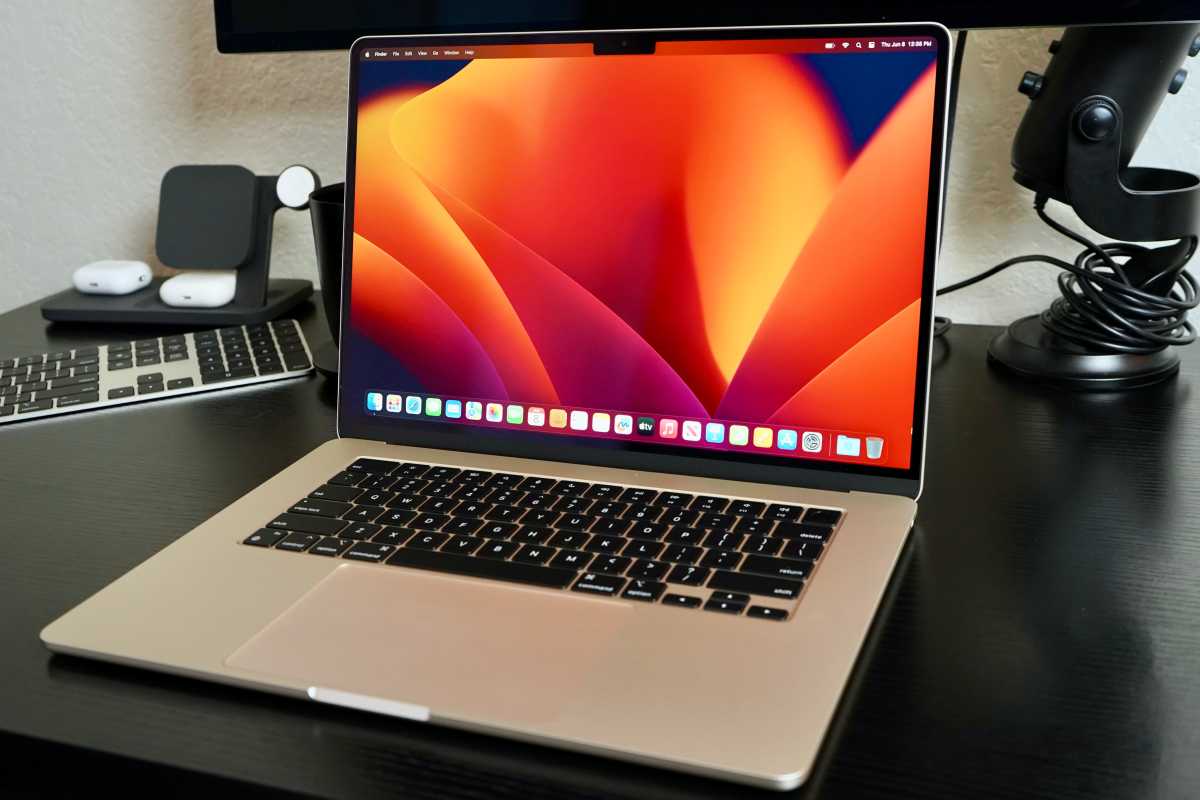
While most of Apple’s “Scary Fast” event was predictable, there were a couple of surprises. The first was Space Black, which is easily Apple’s best laptop color in years. The other was the introduction of the new 14-inch M3 MacBook Pro for $1,599, replacing the 13-inch M2 MacBook Pro at the entry-level position.
On the surface, it seems like a great deal. You get a new design with a larger ProMotion display, an HDMI 2.1 port, and an SD card reader for just $100 more than the previous entry-level Pro with the same 512GB of storage. But when you take a step back, it gets a little more confusing. The 15-inch MacBook Air with 512GB of storage costs $1,499 but you don’t get ProMotion or the extra ports. (At the moment, it also has a slower chip in the M2, but presumably, it will be updated in a few short months.)
That’s a tricky decision (and that’s before you get into the debate over a Pro machine having 8GB of RAM). The Air has a bigger screen, but the Pro’s 14-inch display has HDR and ProMotion. The Pro has an HDMI port that the Air doesn’t, but the base M chip limits both laptops to a single external display with up to 6K resolution at 60Hz. The Air is thinner but larger all around and they both weigh about the same. And neither really lives up to its name.

The 15-inch MacBook Air and the 14-inch MacBook Pro are too close for comfort.
Foundry
I write about these things for a living and I’m not sure which I’d recommend. Basically, Apple replaced one unnecessary laptop (the 13-inch M2 MacBook Pro) with another. Neither of them is necessarily bad, but Apple seems to be concerned more about meeting a price point rather than filling a need.
It’s the same problem we have with the M2 Pro Mac mini and M2 Max Mac Studio, the 10th-gen iPad and the iPad Air–heck even the iPhone SE and the iPhone 13. With each, there are compromises at the low end, not-so-obvious upgrades at the high end, and confusion in between. For example, the 10th-gen iPad ($449) has the same size screen as the iPad Air ($599), but the latter has better color handling and a faster chip. So why do they both need to exist?
As the iPhone SE gets older and older, its $429 price tag is less and less of a bargain. Now that the iPhone 15 has arrived, you can get an iPhone 13 with a larger and superior display, Face ID, dual cameras, twice the storage, faster 5G, and the same A15 processor for just $170 more ($120 if you match the storage).
So what’s a buyer who isn’t well-versed in Apple’s tech specs to do? Apple has built up a good degree of trust and customer satisfaction over the years, so users are likely to buy what they can afford with the belief that they’re getting the best possible device for their money. And depending on what they buy, that might not be the case.






